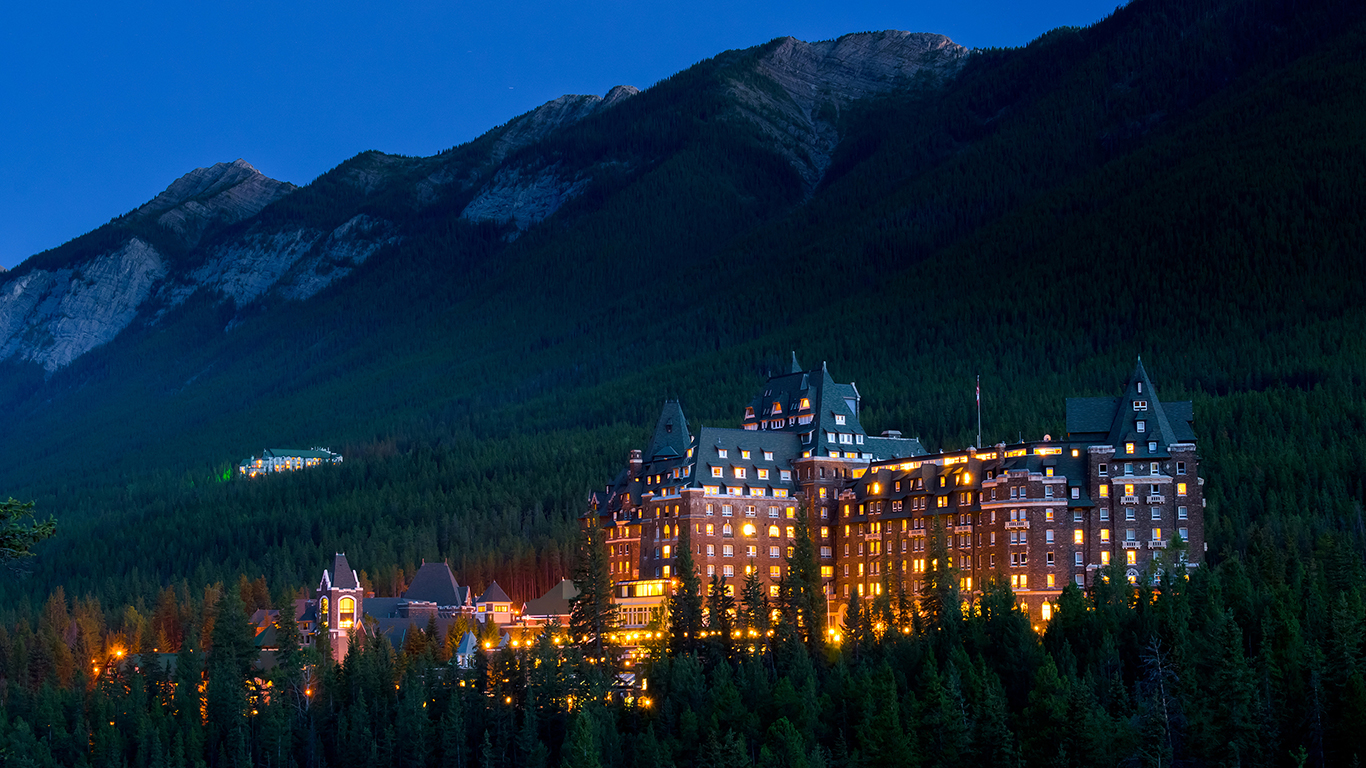
It’s never too early to start thinking about summer vacation! Whether you want to venture to Happy Adventure in northeast Newfoundland, the western edge of Yukon in Beaver Creek, Cartwright-Roblin in southern Manitoba, or even as far north as Resolute, Nunavut, you’ll find a place to stay.
As of December 2022, there were 16,367 business locations across Canada in the traveller accommodation industry group. They include facilities such as hotels, motor hotels, resorts, motels, casino hotels, bed and breakfast homes, and housekeeping cottages and cabins, as well as other types, such as hostels and tourist lodges.
This count was up from 15,737 in June 2022 and 15,315 in December 2021, but down slightly from 16,413 in June 2021. This is about even with the 16,365 counted in December 2020, when it was unclear how many businesses economy-wide had temporarily or permanently closed because of the COVID-19 pandemic. In December 2019, there were 16,072 business locations in the last pre-pandemic count.
Compared with December 2019, the number of hotels in Canada has decreased by 250. Still, of the 16,367 nationwide traveller accommodation business locations in December 2022, about 3 in 10 (4,947) were hotels, located in every province and territory, accounting for the highest proportion among accommodation types.
There were also fewer motels (-98), motor hotels (-75), bed and breakfasts (-284), and resorts (-128); more housekeeping cottages and cabins (+535), and other types of traveller accommodation (+590); and the same amount of casino hotels across Canada in December 2022, compared with three years prior.
What kind of room, and where?
There were 2,490 motels across the country (except in Nunavut), which are generally one- or two-storey structures with exterior access to rooms. In all 10 provinces and Yukon there were 914 motor hotels, which are low-rise buildings like motels but have interior access to rooms, and are located along major roads.
If you want to try your luck at one of them, there were 16 casino hotels spread over seven provinces.
Looking for that all-inclusive stay? There were 1,314 resorts nationwide, in every province and territory. Over one-third (37.0%) were in British Columbia, while nearly half (45.0%) were in Ontario and Quebec. They are generally located in non-urban settings and offer extensive indoor and outdoor leisure activities. There were six resorts in the territories if you’re looking for a truly northern escape!
If it’s a quiet and idyllic experience you’re looking for, there were 2,471 bed and breakfasts across the country. One-third (32.2%) of them were in British Columbia, and over 4 in 10 (43.1%) were in Ontario and Quebec. There were 39 across the three territories, and another 336 in the Maritime provinces.
Canadian summers are short, and many of us like to head for the water. There were 2,065 housekeeping cottages and cabins across Canada available for short-term lodging, and generally including access to private beaches and fishing. Nearly 4 in 10 (38.2%) were in Quebec, while 3 in 10 (30.1%) were in Ontario—there are an abundance of lakes in those two provinces. Another 341 were scattered across the Maritimes.
Finally, there were 2,150 locations nationwide for other traveller accommodations, such as guest houses, tourist homes, short-term rentals, youth hostels and tourist lodges. Nearly 8 in 10 (79.42%) of these accommodation types were located in British Columbia, Quebec and Ontario.
Increased demand, prices and economic contribution
In 2022, Canada had 14.0 million arrivals from the United States and another 4.0 million from overseas—over four times the arrivals recorded in 2021 and over half (55.9% and 53.0%, respectively) of the 2019 level.
Canadian residents took 34.8 million overnight trips within the country in the third quarter of 2022, and 23.1 million in the second quarter—both up from the same quarters in 2021.
The rollback of travel restrictions caused by the pandemic coincided with an increased demand for a place to stay. In 2022, prices for traveller accommodation increased by 29.3% on an annual average basis, after rising 2.2% in 2021. It also varied by province: prices increased the most in Ontario (42.7%), and Nova Scotia (34.6%).
In 2022, the broader accommodation services subsector contributed nearly $12.4 billion (chained 2012 dollars) in gross domestic product, up from over $9.2 billion in 2021 and nearly $8.0 billion in 2020, but short of the nearly $13.6 billion contributed in pre-pandemic 2019.
StatsCAN app
Did you know you can read StatsCAN Plus articles and more on the StatsCAN app? If you’re already using the app, let us know what you think by leaving a review in the Apple App Store and Google Play.
Contact information
For more information, contact the Statistical Information Service (toll-free 1-800-263-1136; 514-283-8300; infostats@statcan.gc.ca) or Media Relations (statcan.mediahotline-ligneinfomedias.statcan@statcan.gc.ca).
